#Punjabi Dress Men
Photo
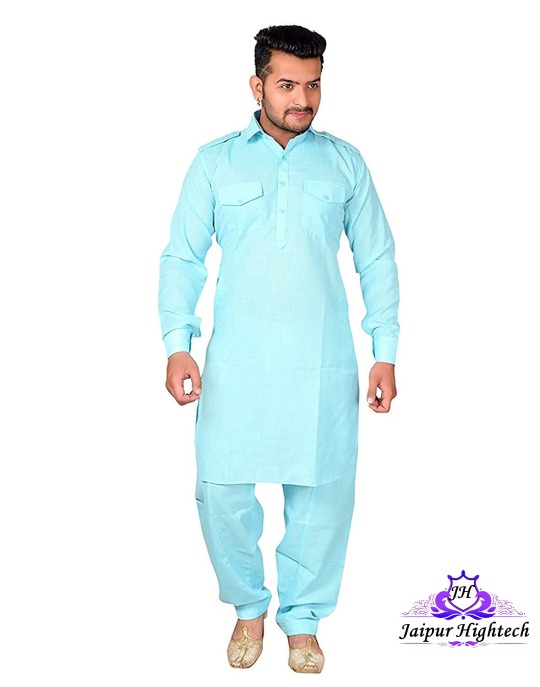
Indian Handmade Designer Men's Pathani Suit Ethnic Wear Cotton Summer Dress Traditional Pathani Kurta Pajama Set Wedding Dress For Men
#Indian Pathani Suit#Pathani Suit For Men#Punjabi Dress Men#Cotton Pathani Suit#Indian Kurta Pajama#Matching Outfits#Indian Men Clothing#Mens Fashion#Men Wedding Dress#Indian Man Dress#Pathani Suits#Festival Dress Men#Men Party Dress#Kurta Pajama Set
0 notes
Photo

The perfectly spun fabric, a precise fit, a strong silhouette — a great suit is pure poetry. #suit #fashion #style #suits #mensfashion #menswear #suitstyle #menstyle #dress #gentleman #dapper #saree #punjabi #instagood #mensstyle #bespoke #suitup #men #fashionblogger #instafashion https://www.instagram.com/p/Cev-dPtgsOL/?igshid=NGJjMDIxMWI=
#suit#fashion#style#suits#mensfashion#menswear#suitstyle#menstyle#dress#gentleman#dapper#saree#punjabi#instagood#mensstyle#bespoke#suitup#men#fashionblogger#instafashion
2 notes
·
View notes
Text
The Enigmatic Allure of Indian Traditional Dresses, Sareesaga
Indian traditional dresses, sareesaga, encapsulate centuries of heritage, craftsmanship, and elegance. From the regal silk sarees of Kanchipuram to the vibrant lehengas of Rajasthan, each attire reflects the cultural diversity and artistic finesse of India. In this comprehensive guide, delve into the mesmerizing world of sareesaga, unraveling its significance, styles, and evolving trends.
Sareesaga: A Kaleidoscope of Culture and Tradition
Embark on a journey through the myriad hues and textures of sareesaga, where each drape narrates a story of its own. From the opulent Banarasi sarees to the graceful Kanjivarams, these traditional garments epitomize timeless elegance and sophistication.
Exploring the Rich Heritage of Indian Traditional Dresses
Step into the vibrant tapestry of Indian traditional dresses, where every attire is a testament to the rich cultural heritage of the land. Explore the intricate embroideries of Chikankari, the dazzling mirror work of Gujarat, and the exquisite handloom weaves of Odisha.
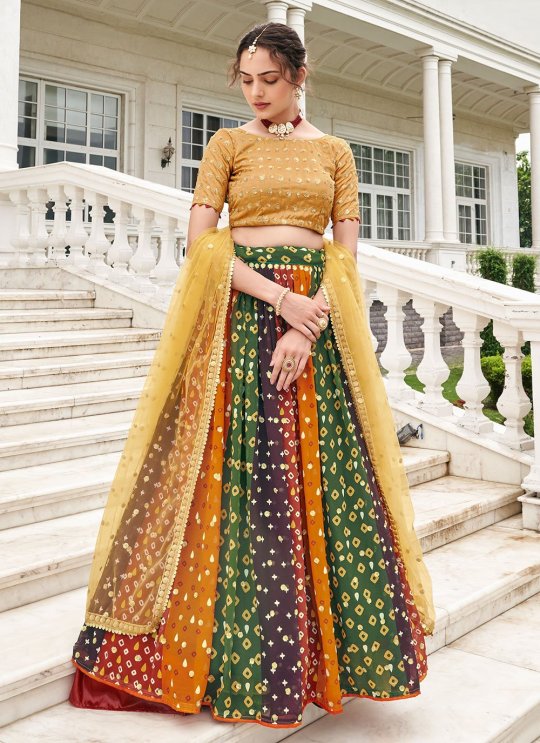
Unraveling the Mystique of Sareesaga: A Closer Look
Delve deeper into the enchanting world of sareesaga as we unravel the intricate craftsmanship and artistic nuances behind these resplendent garments. From the delicate handwoven motifs to the elaborate embellishments, each saree is a masterpiece of artisanal skill and creativity.
Sareesaga Through the Ages: A Historical Perspective
Trace the evolution of sareesaga through the annals of history, from its humble origins in ancient India to its status as a global fashion icon today. Explore the influences of Mughal opulence, British colonialism, and contemporary trends on the ever-changing landscape of Indian traditional attire.
The Enduring Appeal of Indian Traditional Dresses in Modern Times
Discover how Indian traditional dresses continue to captivate hearts and minds across the globe, transcending cultural boundaries and fashion fads. Explore the fusion trends, celebrity endorsements, and sustainable initiatives driving the resurgence of sareesaga in the 21st century.

Mastering the Art of Saree Draping: Tips and Techniques
Unlock the secrets of impeccable saree draping as we share expert tips and techniques to enhance your ethnic ensemble. From the classic Nivi drape to the trendy dhoti style, learn how to accentuate your silhouette and exude confidence with every fold and pleat.
Sareesaga: Celebrating Diversity and Inclusivity
Celebrate the diverse tapestry of Indian traditional dresses, where every region boasts its unique weaving techniques, motifs, and cultural symbolism. From the vibrant Bandhani of Rajasthan to the subtle Jamdani of West Bengal, sareesaga epitomizes the unity in diversity of India's rich sartorial heritage.
The Timeless Charm of Handloom Sarees: A Sustainable Choice
Embrace the timeless allure of handloom sarees as we champion sustainable fashion and ethical craftsmanship. Discover the significance of supporting local artisans, preserving traditional weaving techniques, and fostering eco-friendly practices in the realm of sareesaga.
Revolutionizing Sareesaga: Innovations and Trends
Explore the latest innovations and trends reshaping the landscape of sareesaga, from digital printing techniques to contemporary reinterpretations of classic designs. Discover how designers are pushing the boundaries of creativity while staying true to the essence of Indian traditional dresses.

Preserving the Legacy of Indian Traditional Dresses: A Call to Action
Join us in preserving the legacy of Indian traditional dresses by embracing authenticity, sustainability, and inclusivity in our sartorial choices. Let us honor the artisans, weavers, and craftsmen whose timeless creations enrich our lives and connect us to our cultural roots.
FAQs:
What are the different types of Indian traditional dresses? Indian traditional dresses encompass a wide range of garments, including sarees, lehengas, salwar kameez, and dhotis, each with its unique style and significance.
How do I choose the right saree for an occasion? Consider the occasion, your body type, and personal preferences when selecting a saree. Opt for lighter fabrics like chiffon or georgette for daytime events and silk or brocade for evening affairs.
Can I wear Indian traditional dresses for weddings? Absolutely! Indian weddings are the perfect occasion to showcase your love for traditional attire. Choose from a dazzling array of bridal sarees, lehengas, or anarkalis to make a statement on your special day.
Are handloom sarees eco-friendly? Yes, handloom sarees are known for their sustainable production methods and use of natural fibers. By opting for handwoven garments, you not only support local artisans but also contribute to environmental conservation.
How do I care for my Indian traditional dresses? To ensure the longevity of your Indian traditional dresses, it's essential to follow proper care instructions. Dry clean silk and embellished garments, while handwashing cotton and linen attire in mild detergent.
Where can I buy authentic Indian traditional dresses? You can purchase authentic Indian traditional dresses from reputable stores, boutique designers, or online platforms specializing in ethnic wear. Look for sellers who prioritize quality, craftsmanship, and customer satisfaction.
Conclusion:
In conclusion, Indian traditional dresses, sareesaga, embody the timeless elegance, cultural richness, and artisanal craftsmanship of India. From the intricate weaves of Benarasi silk to the vibrant hues of Bandhani, each attire tells a story of tradition, heritage, and enduring beauty. Embrace the allure of sareesaga and celebrate the legacy of Indian fashion that transcends time and trends.
#Indian traditional dresses#traditional ethnic clothing#traditional dress for women#traditional salwar suit#traditional punjabi suits#traditional wear for women#traditional wear for men#traditional gown
0 notes
Text
Buy Punjabi Kurta Pajama for Men Online • Raimentz
Buy the latest collection of Punjabi kurta pajamas for men online. Traditional and stylish designs are available. Upgrade your wardrobe now!

#kurta pajama#online sale#online men clothes#traditional wear#canadapunjabisuits#onlineshopping#punjabi dresses#raimentz
0 notes
Text
Rocky Aur Rani Ki Prem Kahaani - An honest review
I watched Rocky aur Rani ki Prem Kahaani because everyone I know on social media and few close folks in my real life said it was very entertaining - funny, progressive, feminist , and it showed gender equality.

So I was taken aback, because the general sentiment for KJo movies should be ‘It’s so shit, but I love it’ - that is a sentiment I can live with because we all have our guilty pleasures.
KJo has his audience who love the shit he pulls off every time he ‘directs’ a film with toxic masculinity, regressive female leads , justifying infidelity (always the answer to unhappy marriages) , glorifying Indian culture, where he adds 30 mins of melodrama and lectures to make the characters redeem themselves. Kjo’s movies are as lame as they can be, but people love them. I get it - ‘this shit is so bad, it’s so good’ category of films. Guilty pleasures are exactly this!

So sell me his new offering in exactly this manner - but all reviews and social media comments were glowing words of praise of how he has addressed today’s issues and it’s a progressive film. Are people suffering from amnesia or have they not watched better Bollywood films? Because I have a whole list of films you should watch that actually deal with ‘progressive’ mindsets - way before Kjo’s time!

Rani is a feminist. A FL as feisty news anchor who gives a 5 min lecture on men’s gaze, objectification of women and rape culture, but does an absolute U-turn 5 mins later by objectifying a handsome man in front of her. This is gender equality. Tit for Tat.

Wearing open back blouses to work is sign of new age feminism (Will I get trolled for sounding old school - has KJo ever stepped inside a corporate workspace - who dresses like Rani does?) What’s next? Women CEOs wearing bikinis? And why not get all men to dress like Rocky Randhawa - that would be peak gender equality in dress code at workplace.
Infidelity is the answer to all unhappy marriages. Remember KANK? Yes, let’s repeat that here, but let’s twist it into unrequited love between the senior citizens. Then add memory loss and illness excuse to get the 80yr old grandpa smooch his 75yr old ex-lover in front of his wife and entire family. The issue is not old age love, age is never a restriction to fall in love, the issue here is infidelity. But if this isn’t cringe enough, let’s completely destroy the most beautiful romantic number in Bollywood by playing it in the background to immortalise infidelity and later lust under the garb of love.

Let’s get back to our feminism torch bearer Rani, who has now jumped from knowing the guy for two meetings to lusting over him. She is honest with herself (not with Rocky mind you, because at no point have they had any conversation about themselves) that she is in it purely for the physical attraction, it’s just a fling for her. She is an elitist , feminist, Colombian grad, Bengali Girl (who has a terrible Bengali accent) and the crude, can’t speak English well, Gucci/Fendi wearing, Ferrari driving, protein shake drinking, loud Punjabi boy doesn’t match up to her standards. Kjo’s new level of feminism - make women pull the exact shit on men that men have put women through for decades. Tit for Tat! Gender Equality.
Btw at this point I still don’t know why Rocky loves Rani - love at first sight is always about the looks and physical attraction, so convince me why he loves her - because isn’t he this walking-talking green flag just by being understanding of his grandpa’s feelings and calling out Rani checking him out. A walking green flag who gets his grandpa’s ex-lover and his grandpa together to help his grandpa get better - because love is the cure for all illnesses. All doctors and medical researchers have been wasting their time on getting degrees and super specialisations - please enter Kjo’s school of love.

So now Rani realises she is in love - when and why and what changed her feelings from lust to love - I do not know. She drives on a 4-lane highway in the opposite direction - woman should have died there for her reckless driving, but she lives to propose to Rocky on a f&*king Highway! Bollywood I love you for pulling off this shit.
This is supposed to be the pivotal point in their relationship where she professes her love to him, going down on one knee (because hey you see role reversal - she is the feminist, the alpha female) and telling Rocky everything that HE IS NOT , listing her resume and her exes’. Therefore implying he doesn’t deserve her, but she is taking the high road and still falling for him. All the reasons she lists that she loves about him are actually about his physical aspects = Lust. She doesn’t list one meaningful quality that she actually ‘loves’ about him.
It is at this point that I gave up on the film, because after this RRKPK became a collation of scenes dedicated to social media trending topics:
1. Women burdened with household work
2. Women not liberated enough to pursue their dreams
3. Women being fat shamed
4. Cancel culture
5. Men being shamed for pursuing classical dancing (KJo research FFS - 50% of India’s top kathak dancers are males right from 1940s! )
Each topic got 1-2 scenes, tweets converted to preachy dialogues uttered by our ‘feminist’ queen and zero closures or character growth.
The only thing that works in this movie - is Ranveer , not his character, but him! He is effortless in this role, his comic timing is superb, needs some work on emotions.

Alia is a shadow of her awesome self on screen post her marriage to Ranbir. It hurts to say this, cause I have loved her in all her movies except SOTY.
Can people age gracefully, I couldn’t bear to look at Shabana Azmi and Jaya B - former was gorgeous as hell in her younger days, now is swollen with all the Botox fillers! Jaya has forgotten to act completely. Dharmendra should not even be acting anymore.
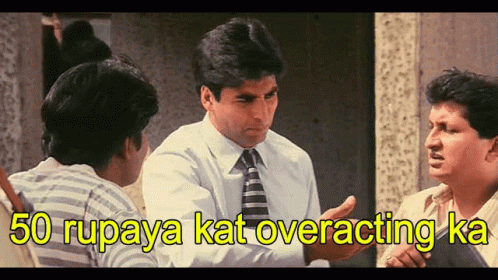
What was the point of rest of the cast? Only Alia’s dad was a decent act.
The one thing I absolutely love in KJo movies is the music and songs! These were crap too. What Jhumka? Because ruining all the songs from ‘The Golden’ decade of Bollywood was not enough, so they made a terrible mashup of Badtameez Dil & Jhumka Gira Re and killed both the songs in one go! Takes some skill doing this - well done!
Why this long rant if I disliked the movie so much, that too KJo movies? I wouldn’t have written one, if the reviews and comments were honest about the movie being average, typical entertainment; but the moment people praised it to nth level of being socially relevant with feminist heroine and gender equality - they deserved to be called out for their shallow thought process thinking that KJo actually cares about any of this stuff.
Worst people think this is ‘quintessential’ Bollywood. Please watch better films - like Amitabh’s roaring 70s, the romance films of 90s, the fun comedies, the glorious slice of life films from Hrishida, the Yash Chopra multistarrers - that’s quintessential, genuine, charm of Bollywood.

Lastly before I wrap this up - RRKPK when literally translated is Love Story of Rocky and Rani. I spent 2.5 hours on this shit show and I still don’t know the answer to why and how they fell in love! They didn’t have one decent conversation about themselves! The latter half is about them wooing their families. The film should have been aptly titled ‘Randhawa and Chatterjee Ki Prem Kahaani’ - It’s all about loving your family - K3G Part 2!

#rocky aur rani ki prem kahani#rrkpk#karan johar#ranveer singh#alia bhatt#shabana azmi#Jaya Bhaduri#dharmendra#film review#honest review#Bollywood#kabhi khushi kabhie gham#hindi films
40 notes
·
View notes
Text
...I’ve had people engage with my race while dating. Not in a positive way, but in a way that fetishises me. There was a woman, (yes, you guessed right, she’s white), who I went on a couple of dates with and my friends and I still speak about her actions to this day. I came across her on Twitter and we started talking over DMs. She showed mild interest, but not as much as I did: remember, I was eager to prove my bisexuality with women and non-binary people, so would find myself engaging excessively on social media platforms. We eventually exchanged numbers and went out on a date. On the lead up to the date, I would receive a flurry of messages, showing interest but also a very specific interest. She talked a lot about Bollywood and well … Indian things. At one point, assuming she knows more than me, would tell me things about the Bollywood stars I grew up with. I assumed she was just dense, but my horniness took over and I went on the date. It was awkward: she controlled a significant part of the conversation and as it was my first proper date with a woman, I was nervous. The date ended and I felt strange. A few days later we were still talking over text, and she kept talking about India and I found myself sighing every time her name popped up on my phone.
I was on the bus, coming back from a meeting when I looked at my phone and saw a message saying:
‘I’m obsessed with Indians now. Watching these movies like “CAN I HAVE ONE?”’
I stopped moving. In fact, it felt like the bus had stopped in shock too. It felt like everyone on the bus took a sharp intake of breath and were staring at my phone.
‘CAN I HAVE ONE?’
Can I have one? My mind goes to takeaways, because I always give people the benefit of the doubt. She’s hungry for a takeaway? No, she wasn’t. She was hungry for an Indian person. The cannibal nature of her fetishisation is not an exaggeration – there’s a need to devour the culture, the people, the art. They consume it.
‘Indian people fucking love me. I will be in an item song. I WILL BE.’
Do Indian people fucking love you? Really? Because this Indian person is really regretting that date. For those who don’t know: an item song is a number in a Bollywood film, performed by a dancer/actor who isn’t cast as a main character but is just introduced for this song – and it is usually very seductive. Like a sexy cameo that no one needed. I guess that sums her up as well.
‘I FANCY ALL INDIANS. Hahahahahahaha!’
The laugh was deafening.
She talked about adopting an Indian accent, about learning how to speak and write in Hindi and then perform her stand up (yup, she’s a comedian). She talked about wearing Indian dresses like they were costumes and has since modelled for Pakistani TV. She would send me scribblings of her learning Hindi and ask me to translate certain words.
I’m Punjabi. I know Hindi from Bollywood. Also, I can barely write in English, I can’t decipher what you’re writing, woman. Eventually, I stopped replying more and more. It took longer than it should have because my heart was broken over the idea that my first proper date with a woman went down like this. What were the chances. I was so adamant that men were the worst and then I was reminded that white women are not far behind them. She was not at all interested in me, my personality, my work, my looks, my desires … she was interested in the fact that I’m Indian. She didn’t care that I had a magazine that works with creative and young people. She didn’t care that I wanted to talk about systematic oppression. She definitely didn’t care about any of my stories. She didn’t even really want to be with me in any sense of the word.
She wanted to use me to learn how to be more Indian. This white woman. Turns out she was known in the comedy circuit for being problematic and my friends who were actual good comedians filled me in. I’ve been fetishised by men before, but that’s kind of expected. I have very little expectation from them, so I wouldn’t be surprised. But when it came from the first woman I went on a proper date with, it sent me down a hole of uncertainty. I wasn’t sure whether I was able to survive the dating world as a bisexual person, because men suck and now, I had this awful experience. So, what now?
Through time and speaking to others, I developed confidence back in myself, but it has still stuck with me. Now when someone says ‘I’d like to watch a Bollywood film with you’, after I’ve told them I’ve spent the whole day dancing to Bollywood songs, instead of saying ‘sure!’, my mind thinks ‘okay but why though’. And I scrutinise actions. I rarely give the benefit of the doubt. I often overanalyse.
Sharan Dhaliwal, Burning my Roti: Breaking Barriers as a Queer Indian Woman
46 notes
·
View notes
Text
youtube
Business Name:
Choli by Mydesistyle Official | Lehenga Malaysia
Street Address:
D-2-57, Block Dahlia, 10 Boulevard PJU 6A, SPRINT
City:
Petaling Jaya
State:
Selangor, Kuala Lumpur
Postal Code:
47400
Country:
Malaysia
Business Phone Number:
+60 17-444 6766
Business Email Address:
[email protected]
Website:
https://www.choliofficial.com/
Facebook:
https://www.facebook.com/mydesistylecollection/
Whatsapp:
https://wa.me/0174446766
Instagram:
https://www.instagram.com/mydesistyle/
Description:
At our bridal boutique, we pride ourselves on our exceptional service and attention to detail. We offer a range of services here in Malaysia, including tailoring and fashion design, to ensure that your outfit is tailored to fit you perfectly and to make you feel confident and beautiful. Our team of experienced dress makers and fashion designers will work with you to create a custom look that is uniquely yours.
🍍 Wedding | Reception | Sangeet | Casual and Party Wear|
🍍 Lehengas, Sherwani, and Suit Materials available
🍍 Do check out our instagram page @choli_bymydesistyle to know more!
🍍 Appointment Based
Google My Business CID URL:
https://www.google.com/maps?cid=23260233051480416
Business Hours:
Sunday 11am-6pm
Monday Closed
Tuesday 11am-6pm
Wednesday 11am-6pm
Thursday 11am-6pm
Friday 11am-6pm
Saturday 11am-6pm
Products:
Men’s Kurta
Lehenga
Saree
Sherwani
Punjabi Suit Materials
Personalized/Customized Clothings
Keywords:
Indian clothing store near me
Indian clothing
Indian bridal shop
lehengas Malaysia
lehenga Selangor
Sarees
bridal store
bridal store near me
wedding lehengas
Kurtas
Sherwanis
Kurtis
Punjabi suits Malaysia
Clothing store
Lehengas
Indian fashion
Indian boutique
Bridal boutique
Indian Clothing Store
Indian Bridal Shop
Malaysian Indian Wedding Boutique
Clothes Shop
Indian Fashion
Service Areas:
Klang Valley, Malaysia
Klang, Selangor, Malaysia
Kajang, Selangor, Malaysia
Rawang, Selangor, Malaysia
Subang, Selangor, Malaysia
Puchong, Selangor, Malaysia
Serdang, Selangor, Malaysia
Damansara, Selangor, Malaysia
Shah Alam, Selangor, Malaysia
Subang Jaya, Selangor, Malaysia
Sungai Buloh, Selangor, Malaysia
Meru, 41050 Klang, Selangor, Malaysia
Petaling District, Selangor, Malaysia
Pandamaran, 42000 Port Klang, Selangor, Malaysia
Kota Damansara, Petaling Jaya, Selangor, Malaysia
Damansara Damai, Petaling Jaya, Selangor, Malaysia
Puchong Perdana, 47100 Puchong, Selangor, Malaysia
Kuala Lumpur, Federal Territory of Kuala Lumpur, Malaysia
Damansara Perdana, 47820 Petaling Jaya, Selangor, Malaysia
Cheras, 56000 Kuala Lumpur, Federal Territory of Kuala Lumpur, Malaysia
Location:

Service Areas:
2 notes
·
View notes
Text
20 Cultures & Nations That Continue to Wear Traditional Clothing Everyday
The world has drastically evolved in many different ways during the past 100 years.
Previously, for a number of reasons, each nation, each region, and almost every town or tribe wore its own distinctive traditional attire. Some were made due to the weather, some for the class, and some because those were the only colors and materials available.
Today, only a small percentage of communities worldwide continue to dress traditionally on a daily basis.
Pakistan

Sari and the shalwar kameez, two types of traditional dress, are worn in Pakistan.
The shalwar kameez is more popular throughout the nation, even among Punjabis.
Saris are typically worn by Muslim and Hindu devotees, and are more frequent in cities than anywhere else. These traditional outfits are made of cotton and are loosely draped around the body, keeping the wearer warm in the winter and cool in the summer.
Indonesia

Indonesia is a group of islands with many varied civilizations, each of which has its own traditional and "westernized" clothing.
Let's focus on the kebaya. Today, Malaysia, Singapore, Brunei, Myanmar, some regions of Thailand, Cambodia, and the Philippines all wear the kebaya.
It's almost always floral and typically paired with a silk, cotton, or polyester sarong. It’s the traditional dress of Indonesia but is predominantly worn by the Javanese, Balinese, and Sundanese.
The kebaya blouse, the brooch (since the original and traditional kebaya has no buttons), and the sarong or skirt make up the traditional clothing ensemble that is typically worn. Many different styles are used today to make it modern, and it's common to see among the people
Maasai of Kenya
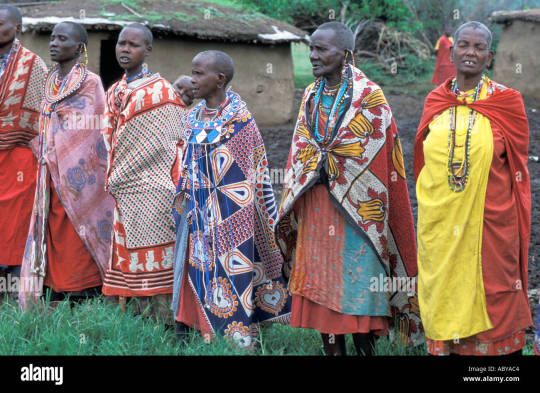
They still wear clothing with a variety of colors and patterns nowadays. Both men and women wear flowery patterns. The most prevalent traditional clothing costume is a kanga, a one piece worn over the body.
It's also customary to wear beaded jewelry, and each hue has a unique meaning. For instance, the colors white and red denote peace and bravery, respectively.
The beads were made out of a variety of materials before European contact, including clay, seeds, bone, etc.
The majority of beads created today are composed of glass. Head shaving is also a right of passage for both genders. The Maasai's traditional clothing seems to be enduring despite their use of contemporary materials.
Sami of Sapmi

The Sami people are found in northern Russia, Sweden, Finland, and Norway. You may have seen Kristof in Frozen wearing all black, but Sami's traditional attire is the complete opposite!
They dress in vibrant hues, elaborate designs, and a variety of styles. It is known as a gakti and is worn during ceremonies, work, and reindeer herding.
Nowadays, the gakti is typically made of cotton, wool, or silk instead of the reindeer leather used in traditional versions.
Wearing certain colors, patterns, or jewelry might reveal a person's origins, marital status, and even the identity of their family.
Bhutan
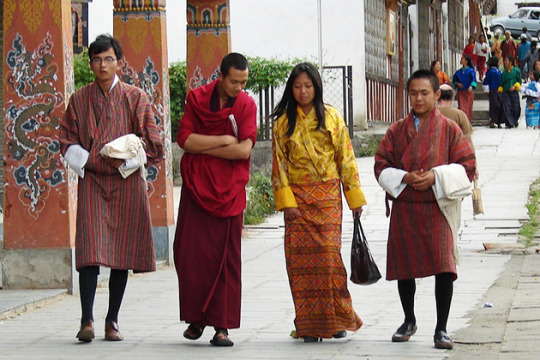
Both men and women still dress traditionally in the little nation to China's south.
A gho is the term used for guys. Women refer to it as kira. The men's attire consists of a knee-length robe with a waist tie. A kabney, a silk scarf that hangs from the left shoulder down to the right hip, may be worn occasionally (like at celebrations).
In fact, if a man works for the government or a school in Bhutan, he must wear the traditional garb, called gho.
The female kira is an ankle-length dress that is typically tied at the waist and clipped with brooches at the shoulders.
Vietnam

Although the ao dai may not be as popular as it once was, it does seem to be making a comeback.
Although it is gender neutral, today most women wear it.
This is the attire you will find in settings where uniforms are common (e.g., schools, banks, restaurants, flight attendants, etc.). Typically, when we think of traditional attire, we picture conservative looks that cover everything.
The ao dai does cover everything, but if you want it to be more promiscuous, you may make the cloth as thin and translucent as you like. Additionally, it can be tailored to fit tightly and form-fittingly to highlight the body's inherent curves.
Japan
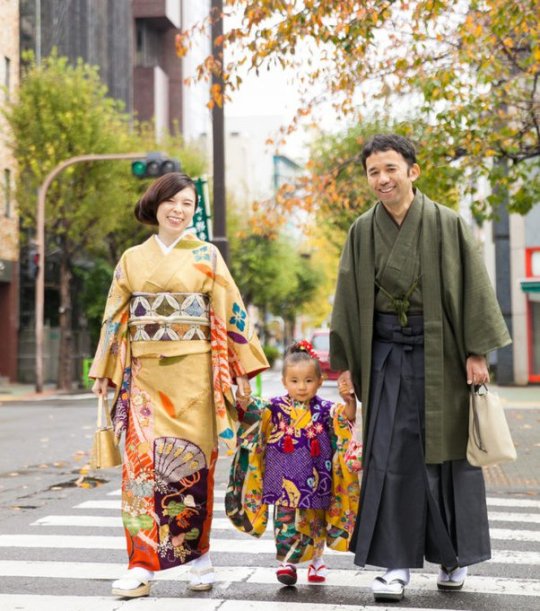
We've all heard of the kimono, which in Japanese literally translates to "thing to wear," but did you realize there are other types of it?
The kimono is available for both men and women.
The most complicated ones have 12 separate parts, including the women's. There are several obi styles and ways to tie them for formal and casual situations in addition to various kimono styles for various occasions.
The kimono for males is more simple, typically consisting of 5 pieces. Today, they are typically darker in tone (blues, blacks, and greens), however occasionally brighter hues are used for more laid-back occasions.
Conclusion
Just as in the summer and spring, dresses are appropriate in the fall. We've gathered some of our favorite cute Best Fall Dresses for Women to assist you figure out how to look put-together in a dress while the temperature outside is 40 degrees.
To read more:
Difference Between Casual and Formal wear
Meta title - Traditional wear around the world 2022[updated] - RAzidonz store.
Meta Description -Culture refers to aspects of human-made elements, including tools, dress, and media, in addition to values, attitudes, and norms.
Web URl - https://razidonz.store/cultural-wear-traditional-clothing/
Focus KWs - Traditional Clothing
Related Kws - traditional dress
culturally-specific clothing
Cultural dress
National clothing sense
Clothing to wear
#traditional dress#culturally-specific clothing#Cultural dress#National clothing sense#Clothing to wear
2 notes
·
View notes
Text
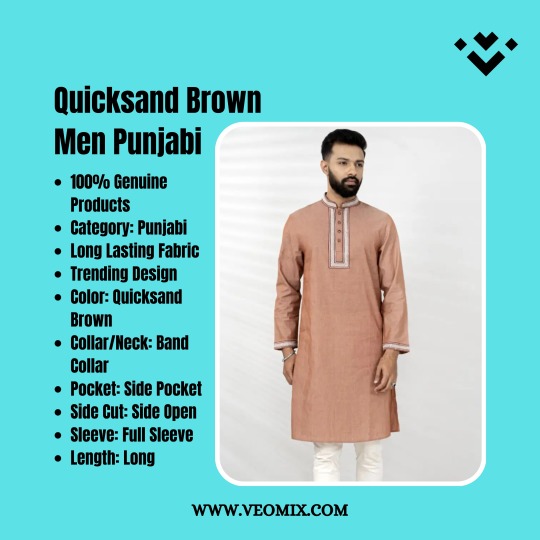
এখন সর্বোচ্চ 24% পর্যন্ত ছাড়ে Punjabi Mens Dress সরাসরি অর্ডার করুন veomix.com থেকে !
দেশের যেকোন প্রান্ত থেকে সহজ এবং দ্রুততম ডেলিভারী পেতে এখনি অর্ডার করুন ।
অফার টাইম নির্দিষ্ট, স্টক সীমিত!
🛒অর্ডার করতে ভিজিট করুনঃ https://veomix.com/product/quicksand-brown-men-punjabi-punjabi-mens-dress/
📲Hotline: +880 9611484718 (Call for Home Delivery)
#PunjabiMensDress #QuicksandBrownPunjabi #ElegantMenswear
0 notes
Photo
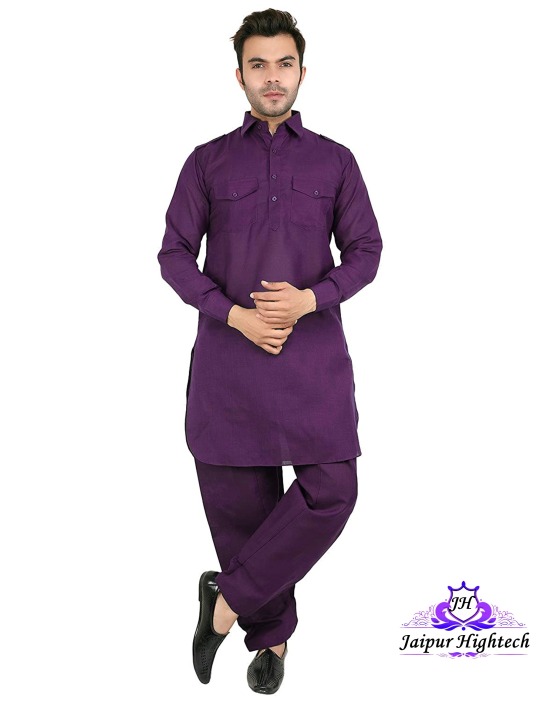
Indian Beautiful Men's Wear Ethnic Kurta Pajama Punjabi Dress Wedding Party Wear Pure Cotton Traditional Designer Pathani Suit For Men
#Pathani Suits#Cotton Pathani Suit#Punjabi Dress Men#Mens Kurta Pajama#Kurta Pajama Set#Indian Kurta Pajama#Men Ethnic Wear#Men Wedding Attire#Wedding Kurta Pajama#Party Wear Dress#Men Festival Dress#Custom Dress For Men#Men Summer Dress#Cotton Kurta Pajama#kurta pyjama men
0 notes
Text
Indian Traditional Dresses: Unveiling the Elegance of Sareesaga
Indian traditional dresses hold a unique charm, weaving together threads of culture, tradition, and elegance. Among these, Sareesaga stands out as a timeless embodiment of grace and sophistication. In this article, we delve into the captivating realm of Indian traditional dresses, focusing on the exquisite allure.
The epitome of Indian traditional attire, captivates hearts with its sheer beauty and versatility. Whether it's a grand wedding or a festive celebration, we adorns women with unparalleled elegance and grace. From the intricate embroidery to the rich hues of fabric, each Our ensemble tells a story of craftsmanship and tradition.
Indian traditional dresses, particularly sareesaga, embody the timeless elegance and cultural richness of India. From handloom sarees to intricately crafted lehengas, each ensemble narrates a story of tradition, heritage, and style. By embracing these timeless attire, we not only celebrate our cultural identity but also pay homage to the artisans and craftsmen who keep the legacy alive.

Embracing Tradition: The Evolution of Indian Traditional Dresses
Indian traditional dresses have evolved over centuries, reflecting the diverse cultures and heritage of the country. with its roots deeply embedded in Indian history, has witnessed a fascinating transformation over time. From traditional silk sarees to contemporary designer pieces, sareesaga continues to reinvent itself while staying true to its cultural essence.
The Allure of Handloom Sarees: A Timeless Tradition
Handloom sarees hold a special place in the world of Indian traditional dresses, embodying the skill and artistry of local weavers. With intricate designs and vibrant colors, handloom sarees celebrate the rich textile heritage of India. Each weave tells a tale of craftsmanship and tradition, making handloom sarees a cherished addition to every woman's wardrobe.
India's cultural tapestry is woven with a myriad of regional traditions, each contributing to the rich tapestry of Indian traditional dresses. From the vibrant Bandhani sarees of Gujarat to the regal Kanjivaram sarees of Tamil Nadu, Our showcases the diversity and beauty of India's heritage. Exploring these regional variations offers a glimpse into the cultural mosaic of the country.
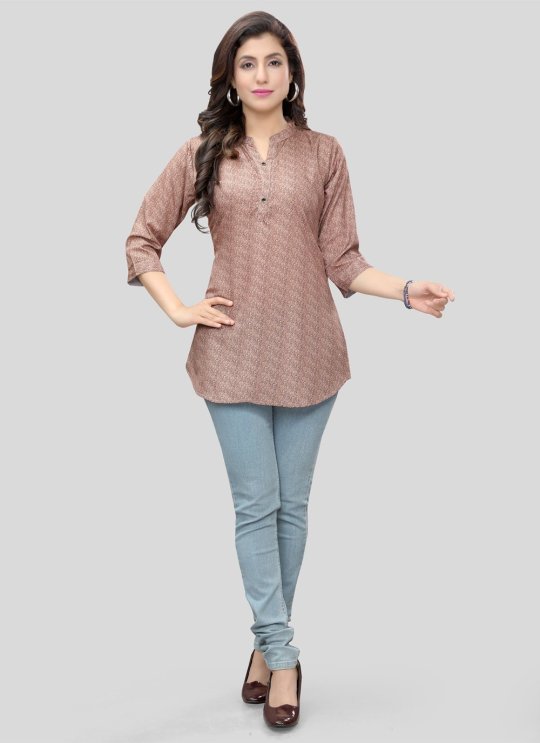
The Timeless Charm of Lehengas: Fusion of Tradition and Fashion
While sarees reign supreme in the world of Indian traditional dresses, lehengas hold a special place in every woman's wardrobe. Combining tradition with contemporary flair, lehengas exude elegance and sophistication. Whether it's a traditional wedding or a modern soiree, a beautifully crafted lehenga adds a touch of glamour to any occasion.
Unlocking the Beauty of Accessories: Completing the Ensemble
No Indian traditional dress is complete without the perfect accessories. From intricately designed jewelry to embellished clutches, accessories play a pivotal role in enhancing the beauty of sareesaga ensembles. Delving into the world of accessories offers endless possibilities to elevate your look and make a statement with style.

Celebrating Festivals in Style: Traditional Attire for Every Occasion
Festivals are an integral part of Indian culture, and what better way to celebrate than in traditional attire? Whether it's the vibrant colors of Holi or the elegance of Diwali, we offers a myriad of options to dress in style. Embracing traditional attire during festivals not only honors cultural heritage but also adds an extra layer of joy and celebration.
The Art of Draping: Mastering the Saree
Draping a saree is an art form in itself, requiring skill, precision, and finesse. Each region in India has its own unique draping style, adding to the charm and diversity of Indian traditional dresses. Learning the art of saree draping allows one to appreciate the intricacies of this timeless garment and carry it with confidence and grace.
In a rapidly changing world, we serves as a symbol of cultural identity and pride. It embodies the essence of Indian tradition, weaving together threads of heritage and legacy. As we embrace modernity, let us not forget the timeless allure, keeping the spirit of tradition alive for generations to come.
#Indian traditional dresses#traditional ethnic clothing#traditional dress for women#traditional salwar suit#traditional punjabi suits#traditional wear for women#traditional wear for men#traditional gown
0 notes
Text
Ethnic Wear Brands In India
As wedding bells ring this festive season, it's time to dress up in desi attire and turn heads. Traditional dress not only attracts attention, but also offers us a sense of belonging to Indian culture. When considering purchasing ethnic clothing, it is critical to conduct a quality check on the materials and design. So, here are some of India's ethnic clothing firms that stand out for their quality and offer a modern take on traditional dress. To preserve the richness of the Indian ensemble with a touch of modern trends, these ethnic wear manufacturers in India have consistently sought to make attractive, elegant, and top-class traditional wear such as sarees, lehengas, kurtis, suits, Discover the best ethnic wear brands in India by 2024.
Last year, we saw certain Indian ethnic wear manufacturers put their best foot forward with new traditional wear offerings. Not only that, but they also became reliable style guides, drawing inspiration from the best of Indian attire while staying current with contemporary trends. Here is a list of ethnic wear brands in India where you can buy the latest Indian clothing and ethnic apparel.
BIBA - BIBA is one of India's best recognised ethnic wear brands. Since 1998, the firm has provided excellent ethnic apparel for women, such as Kurtis, tunics, salwar suits, and Punjabi skirts. Aside from ready-made outfits, they also sell unstitched dress materials and jewellery. This Indian business has even dressed prominent Bollywood stars on the big screen, such as Kareena Kapoor in the film Bajrangi Bhaijaan.
Global Desi - Anita Dogre, a well-known Indian fashion designer, owns this business, which is worth researching if you like fusion ethnic apparel. Global Desi, as the name implies, offers colourful Indian prints, colours, and motifs in Western styles, including off-shoulder, cold-shoulder tunic tops, jackets, kurtas, Maxi dresses, and more. You can also wear these with a variety of bottoms. The brand's boho-chic style line is ideal for weddings, traditional rituals, and holiday celebrations such as Diwali and Eid.
Akkriti by Pantaloons - Akkriti is a sub-brand of the retail giant Pantaloons, and it is one of the greatest ethnic clothing brands in India for women who enjoy wearing Indo-western gowns and outfits. Their contemporary kurta designs, appealing patterns, and pockets, which are uncommon in ethnic apparel, have earned the brand a cult following. Akkriti by Pantaloons offers a wide choice of ethnic wear alternatives for both men and women, as well as a size range that includes plus sizes.
Fabindia - According to the tagline 'Celebrate India,' Fabindia's collections really portray modern Indian culture. It sells a variety of ethnic apparel manufactured by local Indian artists. It is a well-known ethnic clothing company in India, with items exported to nations such as the UAE, the United States, Italy, and Qatar. Other things available at Fabindia include food, healthcare & beauty products, home decor, luggage, jewellery, and more.
W for Woman - W, which stands for 'Woman,' was founded in 2001 with the fundamental objective of providing a full ethnic closet solution for Indian females of all ages. Their product line includes everything from contemporary ethnic dress to formal and festive wear, all with a touch of the latest fashion trends. Kurtas with slits, embellishments, or embroidery are examples of such items. So, if you're seeking for ethnic apparel that's up to date with the latest Western trends, check out W for Women's large range.
0 notes
Text
THE INCREDIBLE EVOLUTION OF THE SALWAR KAMEEZ
Whether you call it the Salwar suit, Punjabi suit, shalwar kameez, or whatever you know, the salwar kameez is one piece of dress that holds a dear place and plays a significant role in Indian women's fashion. In this post, however, we’ll focus on the evolution of salwar kameez over time.
The Salwar Kameez is the traditional dress of the northern and Kashmir regions of India.
A Salwar Suit Design in Maroon
A Salwar Suit Design in Maroon
It’s also worn across the length and breadth of our almost 1.4-billion people country. Men also wear it although it’s more popular among women. The dress consists of a long shirt or tunic referred to as kameez and a trouser that could be wide, narrow, or baggy, known as the salwar. It may be paired with the dupatta; which is basically a shawl or scarf.
ORIGIN OF THE SALWAR KAMEEZ
The Salwar Kameez dress was introduced into Indian fashion and culture by the arrival of Muslims in South Asia around the 12th century. These dresses were later popularized by the Mughal Empire dynasty, a Muslim royal dynasty of Turkic-Mongol origin that ruled India between the 16th century to mid 18th century.
Legend has it that the Anarkali suit worn by courtesans of the Mughal palace was the earliest known form of Salwar Kameez in India. Courtesans of that era were often invited to the palace to perform the Mujra dress. The Anarkali-style dress they wore then was referred to as the Mujra dress. That dress was later renamed the Anarkali in honor of Lady Anarkali, one of the most prominent courtesans of the Mughal era.
An Anarkali Suit for Women
An Anarkali Suit for Women
Mughal women of that era made their dresses from the finest quality silk, velvet, brocades, and muslin. Different variations of the dress have evolved over time.
Punjabi Salwar Kameez blends color, embellishments, and embroidery into its design. The loose kurta, which could be long or short, is usually paired with a baggy salwar that often narrows as it extends downwards.
MODERN SALWAR KAMEEZ STYLES & DESIGNS
The Salwar Kameez worn today has evolved significantly from the Mujra dresses dancers wore to entertain princes within Mughal empire royal courts.
The modern Salwar Kameez now comes in different lengths and sizes as well as different styles and designs while still retaining its historical style and character. This evolution of Salwar Kameez has produced Salwar dresses of diverse kinds that include;
Anarkali suits: a long, flowy, frock style top kameez paired with salwar trousers or churidar
Patiala suits: consisting of a knee-length kameez paired with extremely baggy salwars stitched with pleats.
Sharara: a lehenga-like variation of the salwar kameez with trousers that are flared and wide-legged.
Gharara: this comprises a short kameez and a salwar that is fitted from the waist to the knee from where it then flares out to the toes.
Palazzo salwar: this is a Western take on Indian dress with a kameez top paired with loose palazzo pants that stay parallel to your legs.
Sharara Dress for Traditional Women
Sharara Dress for Traditional Women
Salwar Kameez dresses have come a long way through history. The evolution of Salwar Kameez in India paints a very interesting picture and to a large extent, provides an insight into Indian fashion culture as a whole.
Designers today keep dishing out new designs that continue to build on conventional styles and designs. This dress continues to be a favorite for women in India as well as Pakistan, Bangladesh, and Afghanistan, among others.
0 notes
Text
Unveiling Elegance: Raaya.in's Captivating Collection of Designer Wedding Wear for Men
Explore the epitome of elegance and tradition with Raaya.in, your premier destination for exquisite designer ethnic wear for men, perfect for weddings and special occasions. Whether you seek the majestic aura of a royal wedding sherwani, the refined elegance of blazers tailored for weddings, or the cultural resonance of pathani suits and Punjabi dresses, our curated selection ensures a perfect fit for every occasion. Accentuate your ensemble with ethnic footwear, including mojari shoes, and add a touch of tradition with jodhpuri safas. Explore an array of accessories such as stoles, beads malas, and designer kurta sets, providing a comprehensive solution for sangeet ceremonies, wedding festivities, and cultural celebrations. Raaya.in stands as your go-to destination, offering a diverse and captivating array of menswear that beautifully marries tradition and contemporary style. Visit our website to browse through the unique collection that promises to elevate your wedding attire experience.
#mensfashion#designerwearformen#indiantraditionalwear#Traditionalwedding#Royalmenscollection#menswear
0 notes
Text
Karwa Chauth and Fasting in Guru Granth Sahib
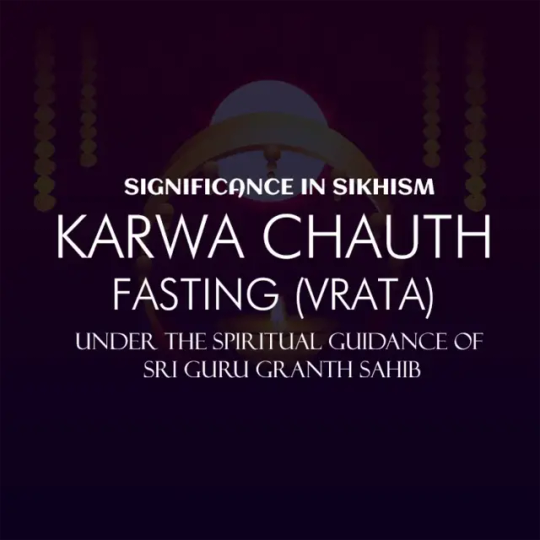
Fasting, Vrata in Guru Granth Sahib
For a clear understanding of Significance of fasting (Upvasa) e.g. Karwa Chauth, Ekadashi Vrata etc, let's have look on the following verses of Sri Guru Granth Sahib Ji first.
ਧੰਨੁ ਗੁਪਾਲ ਧੰਨੁ ਗੁਰਦੇਵ ॥ ਧੰਨੁ ਅਨਾਦਿ ਭੂਖੇ ਕਵਲੁ ਟਹਕੇਵ ॥
ਧਨੁ ਓਇ ਸੰਤ ਜਿਨ ਐਸੀ ਜਾਨੀ ॥ ਤਿਨ ਕਉ ਮਿਲਿਬੋ ਸਾਰਿੰਗਪਾਨੀ ॥੧॥
ਆਦਿ ਪੁਰਖ ਤੇ ਹੋਇ ਅਨਾਦਿ ॥ ਜਪੀਐ ਨਾਮੁ ਅੰਨ ਕੈ ਸਾਦਿ ॥੧॥ ਰਹਾਉ ॥
ਜਪੀਐ ਨਾਮੁ ਜਪੀਐ ਅੰਨੁ ॥ ਅੰਭੈ ਕੈ ਸੰਗਿ ਨੀਕਾ ਵੰਨੁ ॥
ਅੰਨੈ ਬਾਹਰਿ ਜੋ ਨਰ ਹੋਵਹਿ ॥ ਤੀਨਿ ਭਵਨ ਮਹਿ ਅਪਨੀ ਖੋਵਹਿ ॥੨॥
ਛੋਡਹਿ ਅੰਨੁ ਕਰਹਿ ਪਾਖੰਡ ॥ ਨਾ ਸੋਹਾਗਨਿ ਨਾ ਓਹਿ ਰੰਡ ॥
ਜਗ ਮਹਿ ਬਕਤੇ ਦੂਧਾਧਾਰੀ ॥ ਗੁਪਤੀ ਖਾਵਹਿ ਵਟਿਕਾ ਸਾਰੀ ॥੩॥
ਅੰਨੈ ਬਿਨਾ ਨ ਹੋਇ ਸੁਕਾਲੁ ॥ ਤਜਿਐ ਅੰਨਿ ਨ ਮਿਲੈ ਗੁਪਾਲੁ ॥
ਕਹੁ ਕਬੀਰ ਹਮ ਐਸੇ ਜਾਨਿਆ ॥ ਧੰਨੁ ਅਨਾਦਿ ਠਾਕੁਰ ਮਨੁ ਮਾਨਿਆ ॥੪॥੮॥੧੧॥ { ਰਾਗ ਗੋਂਡ, ਭਗਤ ਕਬੀਰ ਜੀ, ਪੰਨਾ 873}
ਅੰਨੁ ਨ ਖਾਹਿ ਦੇਹੀ ਦੁਖੁ ਦੀਜੈ ॥
ਬਿਨੁ ਗੁਰ ਗਿਆਨ ਤ੍ਰਿਪਤਿ ਨਹੀ ਥੀਜੈ ॥
ਮਨਮੁਖਿ ਜਨਮੈ ਜਨਮਿ ਮਰੀਜੈ ॥ (ਮ: 1, 905)
ਨਉਮੀ ਨੇਮੁ ਸਚੁ ਜੇ ਕਰੈ ॥ ਕਾਮ ਕ੍ਰੋਧੁ ਤ੍ਰਿਸਨਾ ਉਚਰੈ ॥
ਦਸਮੀ ਦਸੇ ਦੁਆਰ ਜੇ ਠਾਕੈ ਏਕਾਦਸੀ ਏਕੁ ਕਰਿ ਜਾਣੈ ॥
ਦੁਆਦਸੀ ਪੰਚ ਵਸਗਤਿ ਕਰਿ ਰਾਖੈ ਤਉ ਨਾਨਕ ਮਨੁ ਮਾਨੈ ॥
ਐਸਾ ਵਰਤੁ ਰਹੀਜੈ ਪਾਡੇ ਹੋਰ ਬਹੁਤੁ ਸਿਖ ਕਿਆ ਦੀਜੈ ॥ {ਪੰਨਾ 1245}
ਵਰਤ ਨੇਮ ਮਜਨ ਤਿਸੁ ਪੂਜਾ ॥ ਬੇਦ ਪੁਰਾਨ ਤਿਨਿ ਸਿੰਮ੍ਰਿਤਿ ਸੁਨੀਜਾ ॥
ਮਹਾ ਪੁਨੀਤ ਜਾ ਕਾ ਨਿਰਮਲ ਥਾਨੁ ॥ ਸਾਧਸੰਗਤਿ ਜਾ ਕੈ ਹਰਿ ਹਰਿ ਨਾਮੁ ॥੨॥ {ਪੰਨਾ 393}
ਸਿੰਮ੍ਰਿਤਿ ਸਾਸਤ੍ਰ ਬਹੁ ਕਰਮ ਕਮਾਏ ਪ੍ਰਭ ਤੁਮਰੇ ਦਰਸ ਬਿਨੁ ਸੁਖੁ ਨਾਹੀ ॥੧॥
ਵਰਤ ਨੇਮ ਸੰਜਮ ਕਰਿ ਥਾਕੇ ਨਾਨਕ ਸਾਧ ਸਰਨਿ ਪ੍ਰਭ ਸੰਗਿ ਵਸੈ ॥੨॥੨॥੧੫੧॥{ਪੰਨਾ 408}
ਇਕਿ ਤੀਰਥਿ ਨਾਵਹਿ ਅੰਨੁ ਨ ਖਾਵਹਿ ॥
ਇਕਿ ਅਗਨਿ ਜਲਾਵਹਿ ਦੇਹ ਖਪਾਵਹਿ ॥
ਰਾਮ ਨਾਮ ਬਿਨੁ ਮੁਕਤਿ ਨ ਹੋਈ ਕਿਤੁ ਬਿਧਿ ਪਾਰਿ ਲੰਘਾਈ ਹੇ ॥ {ਪੰਨਾ 1024}
What is Fasting, Upvasa?
There are numerous, varieties of fasts in the religious traditions of India, not possible to calculate the exact number, how many there are? Fasting refers to the denial of food and drink for a specified time while keeping the mind in a particular emotional state. Fasting is based on human desires, which are related to their belief that they are devoted to God, demi-God, or the one they worship and want to achieve divine favor through their ability to fast. There are numerous rituals centering on the worship of multiple gods and goddesses in the Puranic ideology, where devotees practice certain methods to please individual Gods. Some of these include Navratri, Shivaratri, Janmashtami, Karva Chauth, Ahoi, and Ekadashi.
Karwa Chauth Vrata
Hindu married women fast on the fourth day of the waning moon in the month of Kartik, known as Karva Chauth. They have a happy procession in the early morning just before sunrise. A pre-dawn meal known as 'Sargi' is also sent by their parents where they consume food items before sunrise. In this meal, fennel seeds and fruits are offered, and the moon is worshiped. Secondly, fasting women do not take in any food or drink for the entire day. They worship the moon using a clay pot and break the fast by looking at their husband’s faces at night. The keeping of a clay pot represents the wife’s loyalty to her husband, which is a representation of how she was malleable and unformed like a clay pot at the time of the wedding and has remained true to her chosen mate. The tradition puts a lot of importance on morality and yet, why don’t men also have a tradition to show their morality? This tradition keeps gender unbalanced and may create an impression that women are servants of men though this does not necessarily say anything about the woman’s husband’s moral character.
Traditions of Karwa Chauth
Suhagans (married women) have plates of honey, almonds, dates, and money (Beya) before breaking their fast in the evening. This ritual is done after the sunset. These women dressed in red attires with makeup, sit in the circle. Later on, they share the 'Beya' from their plates with each other. The image of the moon is placed in the middle of the moon-like circular formation. All the women pay their homage from their place of seat and offer prasad from their plates. Eventually, they pass the plates around the circle. In Punjab's folk tradition, they keep singing in Punjabi like;
ਕਰਵੜਾ ਨੀ ਕਰਵੜਾ
ਲੈ ਨੀ ਭੈਣੇ ਕਰਵੜਾ,
ਲੈ ਵੀਰੋ ਕੁੜੀਏ ਕਰਵੜਾ,
ਲੈ ਸਰਬ ਸੁਹਾਗਣ ਕਰਵੜਾ,
ਲੈ ਇੱਛਾਵੰਤੀ ਕਰਵੜਾ,
ਲੈ ਭਾਈਆਂ ਦੀ ਭੈਣੇ ਕਰਵੜਾ,
ਕੱਤੀਂ ਨਾ ਅਟੇਰੀਂ ਨਾ,
ਘੁੰਮ ਚਰਖੜਾ ਫੇਰੀਂ ਨਾ,
ਸੁੱਤੇ ਨੂੰ ਜਗਾਈਂ ਨਾ,
ਰੁੱਸੇ ਨੂੰ ਮਾਨਈਂ ਨਾ,
ਪਾਟੜਾ ਸੀਵੀਂ ਨਾ
ਕਰਵੜਾ ਵਟਾਇਆ,
ਜਿਵੰਦਾ ਝੋਲੀ ਪਾਇਆ...
During singing this particular song, Brahmin performs a ritual of worship and takes something from each plate.
Story of Karwa Chauth
The story associated with Karva Chauth goes as follows: A long time ago there was a king with a queen named Veero. She loved her sister Vero who was the daughter of their stepmother. Once, during a Karva Chauth fast, Veero saw that the moon was hidden for a long time. Veero’s brothers couldn’t bear their sister’s hunger, therefore, they made a fire in the forest, and spread their cloth sheet, so that Veero could see the moon through a sieve. Veero thought she was right and Veero broke her fast.
However, the king had left the palace earlier to go hunting, and thorns from the forest pierced him 365 times, making him unconscious. Sad indeed, the queen picked up the body of her husband and started plucking the thorns one at a time. A year passed before the king regained consciousness. In the end, the queen finally pulled out 364 thorns from the king’s body. This is how the origin of Karva Chauth took place.
At this point, a bangle seller came around and caused a fuss outside. The queen went shopping for bangles, leaving the last thorn on the king’s body to be removed by the maid. Therefore, the king assumed that the maid was his queen. Unfortunately, this meant that the real queen had to serve as a servant. She made dolls out of a piece of cloth, and played with it, repeatedly saying, ‘Rani Si So Golli Hoi, Golli Si So Rani Hoi’ ਰਾਣੀ ਸੀ ਸੋ ਗੋਲੀ ਹੋਈ, ਗੋਲੀ ਸੀ ਸੋ ਰਾਣੀ ਹੋਈ which means the queen became maid, and the maid became queen. Later on, the lie was discovered and the real queen was reinstated.'
Examination of this story and the Karva Chauth rituals brings about many questions. Which king was mentioned in the story? What country was his kingdom and when did these things happen? On what basis were there 365 pricking thorns on him and why was no doctor invited to remove these thorns? Why were 364 thorns plucked off while only one remained, and why did the king regain consciousness after the last thorn was removed? After removing the first 364 thorns why couldn’t he wake? Is a husband allowed to marry another wife if his wife fails to take care of him for one day, as shown in the story of the king?
Spiritual Significance
These questions are never fully addressed by the story and the Karva Chauth rituals, which have no element of fact or religion. There are a number of notable issues that must be considered in this whole process.
Firstly, fasting and abstaining from food and water in order to fulfill a desire or wish is not in accordance with Gurbani. It also discourages obstinate actions because the Lord cannot be pleased in this manner. These acts are often imagined products and are not truly religious. Guru Granth Sahib Says,
'ਮਨਹਠਿ ਕਰਮ ਕਰੇ ਸੋ ਛੀਜੈ॥ ਬਹੁਤੇ ਭੇਖ ਕਰੇ ਨਹੀ ਭੀਜੈ॥' (ਪੰਨਾ-1059)
'ਮਨਹਠਿ ਕਰਮ ਕਮਾਵਦੇ ਨਿਤ ਨਿਤ ਹੋਹਿ ਖੁਆਰੁ॥
ਅੰਤਰਿ ਸਾਂਤਿ ਨ ਆਵਈ ਨਾ ਸਚਿ ਲਗੈ ਪਿਆਰੁ॥' (ਪੰਨਾ-66)
The second idea revolves around the belief that fasting with demands and wishes causes a long life for one’s husband. On the other hand, this goes against the normal way of affairs. Is it really possible to achieve a longer lifespan by fasting? Would it not be as if one was trying to please God with starvation against nature’s will? Can anyone imagine a benevolent God known as a mother, father, and guardian, taking pleasure in witnessing a person’s hunger?
If fasting was truly related to longevity, there would be so many people in this nation whose lives should be exceedingly long owing to the lack of food. However, this is not true. The teachings of Gurbani highlight the need for understanding, accepting, and living in line with nature. The truth is that every person is born to die. This is an indisputable fact, and no one can avoid this unavoidable fate.
As many spiritual traditions suggest, fasting or observing Vratas can have physical health benefits. Nevertheless, when fasting is purely motivated by desires and the hope of being rewarded by God, it ceases to be a genuine spiritual practice.
'ਜੋ ਆਇਆ ਸੋ ਚਲਸੀ ਸਭੁ ਕੋਈ ਆਈ ਵਾਰੀਐ॥' (ਪੰਨਾ-474)
'ਬਾਦਿਸਾਹ ਸਾਹ ਵਾਪਾਰੀ ਮਰਨਾ॥ ਜੋ ਦੀਸੈ ਸੋ ਕਾਲਹਿ ਖਰਨਾ॥' (ਪੰਨਾ-740)
Is it possible for one's actions to extend another person's life? Can our efforts truly alter the fundamental laws of nature?
'ਧੁਰਿ ਲਿਖਿਆ ਮੇਟਿ ਨ ਸਕੀਐ ਜੋ ਹਰਿ ਲਿਖਿ ਪਾਇਆ॥' (ਪੰਨਾ-789)
Read the full article
0 notes
Text
"Unmasking the Myth: Exposing the Truth Behind Sikh Separatism in India – A Political Mirage?"
Justin Trudeau’s visit to Punjab, India in 2018 has sparked a diplomatic dispute between India and Canada. During his trip, Trudeau visited the Golden Temple in full Punjabi dress, which is the holiest site of the Sikh religion. However, the visit also led to Trudeau receiving a list of India’s most-wanted men who were on Canadian soil.
One of the men on that list, Hardeep Singh Nijjar, was…
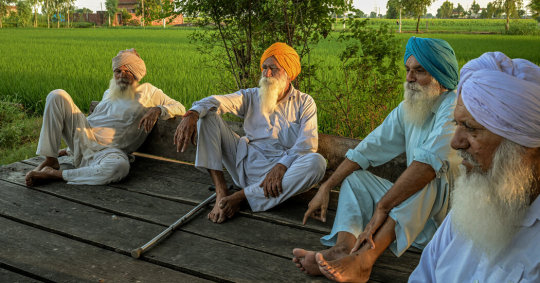
View On WordPress
0 notes